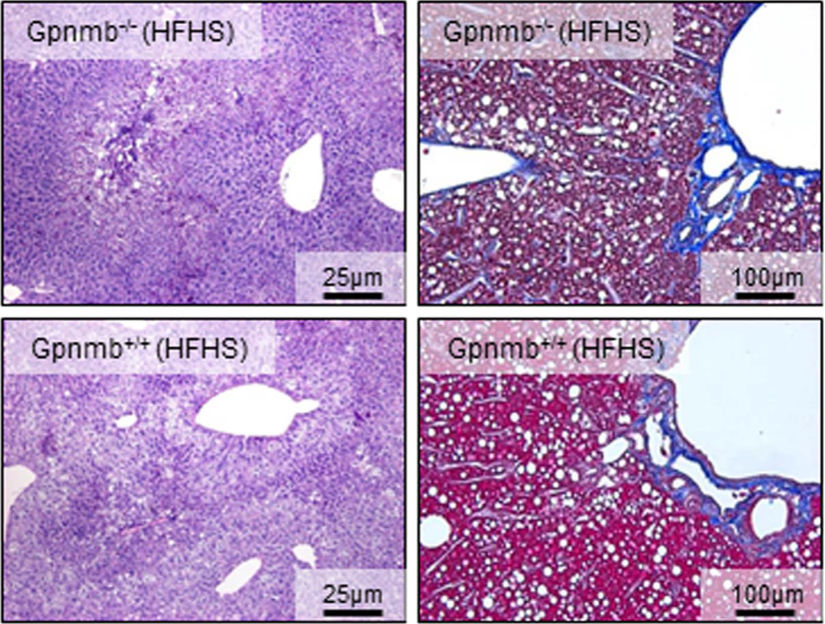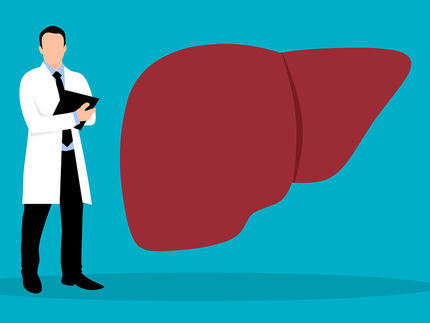Therapeutic protein targets liver disease
Research identifies a protein that ameliorates liver damage caused by diet induced obesity
Advertisement
“Non-alcoholic fatty liver disease (NAFLD) is now considered the most common cause of chronic liver disease worldwide and the prevalence has increased beyond 30% in developing countries,” say Jun Wada and colleagues in a recent report. Their research shows that overexpression of the protein Gpnmb can help work against the oxidative stress and fibrosis of the liver that results from diet-induced obesity.

Periodic acid-Schiff (PAS) staining (left panels) and Azan-Mallory staining (right panels) of liver tissues of Gpnmb−/− (no expression) and Gpnmb+/+ (enhanced expression) mice fed high-fat high-sucrose chow.
Okayama University
In this study Wada and colleagues at Okayama University Graduate School of Medicine University, National Hospital Organization Okayama Medical Center, the Animal Resource Development Unit and RIKEN Center for Life Science Technologies studied mice that had been bred not to express Gpnmb in white adipose tissue, as well as a transgenic breed of mouse with increased levels of Gpnmb. “Initially, we hypothesize that the tissue inflammation in WATs and insulin resistance would be influenced by the genetic manipulation of Gpnmb,” explain Wada and colleagues in their report. “Surprisingly, the fat accumulation, inflammation in WATs, and insulin sensitivity were not altered but the overexpression of Gpnmb improved and ameliorated the fat accumulation and tissue fibrosis in the liver.”
Although Gpnmb was mainly detected in the adipose tissue, the researchers observed its presence in certain liver cells in the transgenic mice, although not wild-type mice. They found that serum too contained Gpnmb and that a high-glucose high-sucrose diet increased sera Gpnmb levels in both the transgenic and wild-type mice.
The researchers next tested Gpnmb levels in human patient sera and found it increased for type 2 diabetes patients compared with patients with a normal glucose tolerance, and increased further still for patients with non-alcoholic fatty liver disease. They suggest that Gpnmb is a promising diagnostic marker and that it may be a key therapeutic molecule for non-alcoholic fatty liver disease.
Original publication
Akihiro Katayama, Atsuko Nakatsuka, Jun Eguchi, Kazutoshi Murakami, Sanae Teshigawara, Motoko Kanzaki, Tomokazu Nunoue, Kazuyuki Hida, Nozomu Wada, Tetsuya Yasunaka, Fusao Ikeda, Akinobu Takaki, Kazuhide Yamamoto, Hiroshi Kiyonari, Hirofumi Makino & Jun Wada; "Beneficial impact of Gpnmb and its significance as a biomarker in nonalcoholic steatohepatitis"; Scientific Reports; 2015



























































